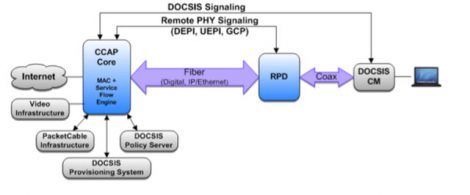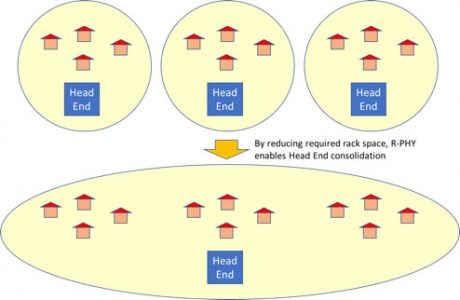
The cable market is challenged by a demand for increasing subscriber bandwidth while at the same time maintaining or reducing CapEx and OpEx. This challenge drives MSOs to deploy new technologies and network architectures. The most recent evolution in the cable industry entails Remote-PHY (R-PHY) technology to deliver digital DWDM signals over the fiber part of the HFC network rather than traditional analog or QAM signals.

Figure 1: Cable Labs Remote-PHY architecture
The idea behind the R-PHY concept is to move the PHY functionality that is traditionally located and imbedded in the Head End (HE) equipment to the cable nodes. This functional split and distributed remote-PHY architecture reduce the amount of equipment needed to be installed at the Head End from a large number of equipment racks into very few.

Figure 2: Current vs Remote-PHY architecture
Increasing space efficiency allows additional equipment serving a larger number of subscribers spread over a larger geography from a Head End. Head End consolidation of multiple Head Ends into one helps MSOs to significantly reduce major OpEx. Using DWDM transceivers and add/drop technology over HFC fibers, allows a more efficient use of the fiber resource. It also extends the maximum distance between the Head End and the distributed nodes containing the Remote PHY devices. By deploying multiple remote-PHY nodes, each node serving fewer number of homes, MSOs enable subscribers to enjoy higher bandwidth and more advanced services.

Figure 3: Remote-PHY technology enables Head End consolidation
OE Solutions has been a long time leading provider of optical transceivers including DWDM, CWDM and Gray optics for the MSO and cable industry. With OE Solutions I-Temp+ technology, we help enable deployment of cable nodes also in very hot areas (such as desert states) and enable the use of equipment with more demanding thermal requirements.